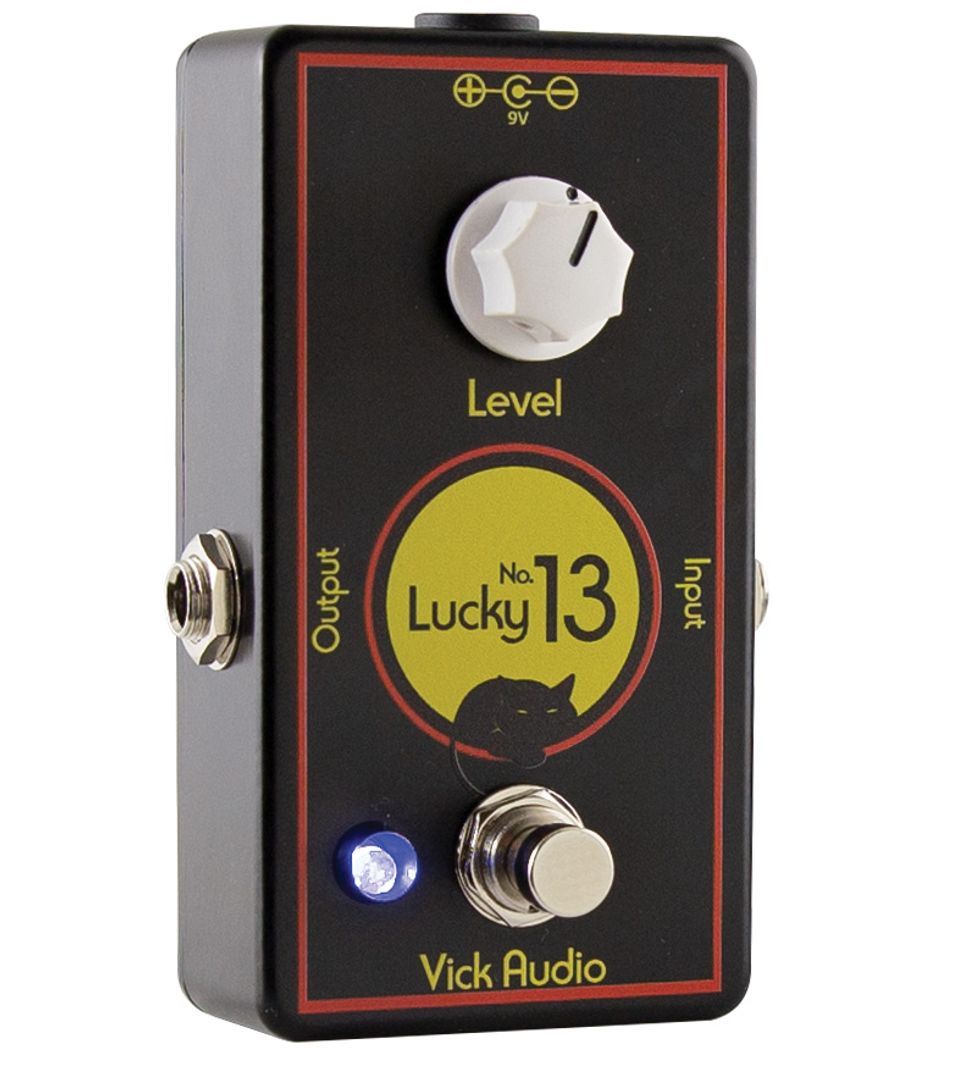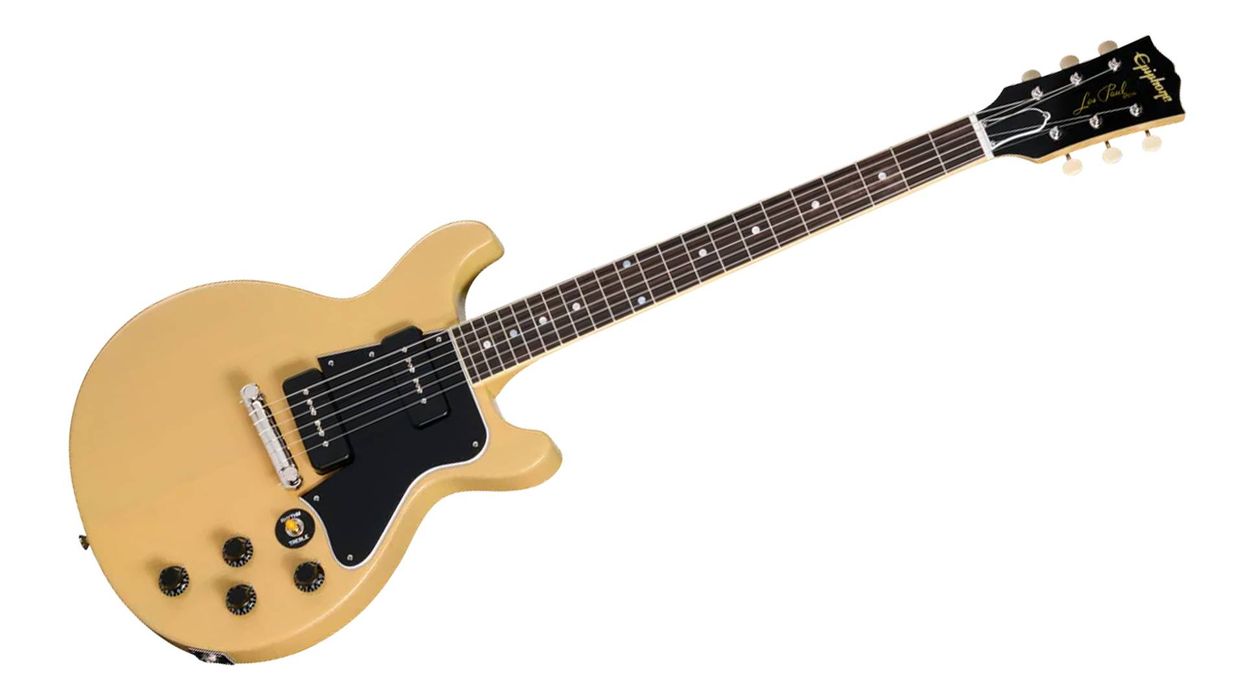Clip 1: Eastwood Sidejack Baritone DLX with Curtis Novak Widerange Jazzmaster pickups into a Goodsell Valpreaux 21. Neck pickup, first with pedal bypassed, then engaged with Lucky 13 level at max and neck pickup selected, then middle position, then bridge, then back and forth between positions, adjusting guitar volume to various levels throughout.
Clip 2: Curtis Novak Tele-V Telecaster bridge pickup into the Lucky 13 (bypassed first, then engaged with level at 3 o’clock and guitar volume at max) then into the boost side of a SoundBrut DrVa MkII and a Ground Control Tsukuyomi mid boost, then into a 1976 Vibrolux Reverb with a Celestion G10 and a WGS G10C/S.
RatingsPros:Myriad fuzz tones—from thick and gnarly to reedy and sqwonky—via guitar-volume tweaks. Cleans up really well with humbuckers. Pretty decent price. Cons: Somewhat unpredictable sounds, guitar to guitar/rig to rig. Can be quite noisy with single-coils. Street: $119 Vick Audio Lucky 13 vickaudio.com | Tones: Ease of Use: Build/Design: Value: |
Inspired by the 1960s Colorsound Fuzz designed by Dick Denney (also of Vox AC30 fame), Vick Audio’s new Lucky 13 is one of those stomps whose full potential can only be accessed via guitar-volume tweaks.
Silicon fuzzes sometimes have the reputation of being jagged, harsh, or trashy, but at full guitar volume, the Lucky 13 has a warm, thick, germanium-like sound. Its single level control (which governs a simple, two-transistor circuit) goes from nada to woolly-bear beef at its extremes, but for my money there’s no reason to set it below 3 o’clock. The higher you set it, the more tonal variety, dynamics, and clean headroom you can conjure with your instrument’s volume knob—though different rigs can have surprisingly different results.
For instance, with my Tele’s single-coils, lowered-volume sounds were more lo-fi, less varied, and considerably noisier. Meanwhile, driven by a baritone with Curtis Novak Widerange Jazzmaster humbuckers, the 13 churned out a deliciously smooth chocolate-destruction milkshake with the neck pickup at max, a chunky, slightly sweeter explosion with both pickups at max, and a velvet-fisted bruising with the bridge dimed. But these doom-friendly sounds were just occasional stopping points, as the ’buckers yielded a plethora of in-between tones that didn’t just vary in cleanness but also in EQ profile. With baritone volume near minimum, the tones were surprisingly clean, though also scooped and thin—but not quite Mosrite Fuzzrite-thin—yet more mids crept in as I increased guitar dBs. At mid volume, the ’buckers brought out wonderfully sensitive, even, and amp-like overdrive/crunch, and as I nudged volume further, the tones bloomed beautifully … until bursting into a filthy mushroom cloud at full throttle.
Test Gear: Eastwood Sidejack Baritone DLX and Squier Tele Custom with Curtis Novak pickups, silver-panel Fender Vibrolux Reverb and Vibro Champ, Goodsell Valpreaux 21, Jaguar HC50

























































